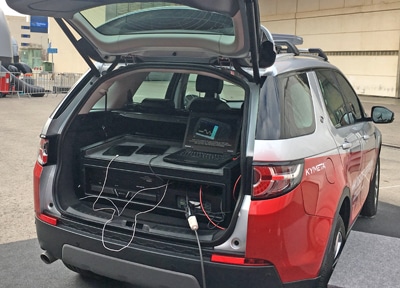
By Adam Bennett, Product Marketing Manager, VT iDirect
This week iDirect’s Vice President, Emerging Products, Greg Quiggle, is in attendance at Mobile World Congress (MWC). Held in Barcelona from 26 February – 1 March, this is the largest show in the mobile industry with over 100,000 attendees and exhibitions from every major supplier. While the emergence of 5G as the future for cellular connectivity is clearly going to be a hot topic, what might be more surprising is the growth of satellite industry representation within the vast halls of the show. Satellite service providers are seeking deeper collaboration with cellular service providers because VSAT can play a valuable role supporting the growth of 5G through satellite-based 5G networks.
Customers expect a blend of connectivity options, seamlessly transitioning between Wi-Fi, cellular, and VSAT coverage as they move from place to place. They want personalized services that are highly adaptable as they change applications – and no one wants to wait to activate these services. The telecom industry hopes that 5G will become this master wireless platform, able to merge mobile cellular, fixed broadband, and local area networks into one converged solution.
 5G is relevant to satellite communications in several ways. First, the satellite industry can learn from the underlying technologies instead of trying to invent proprietary solutions. Second, satellite networks will need to support 5G data and management interfaces in order offer viable 5G extensions through broadband and backhaul VSAT links. Third, satellite has opportunity to become part of a multi-access solution and enter new markets, such as connected cars capable of receiving both cellular and VSAT. Kymeta proved this true at MWC during yesterday’s connected car demonstration that showed their antenna coupled with iDirect’s X7 remote.
5G is relevant to satellite communications in several ways. First, the satellite industry can learn from the underlying technologies instead of trying to invent proprietary solutions. Second, satellite networks will need to support 5G data and management interfaces in order offer viable 5G extensions through broadband and backhaul VSAT links. Third, satellite has opportunity to become part of a multi-access solution and enter new markets, such as connected cars capable of receiving both cellular and VSAT. Kymeta proved this true at MWC during yesterday’s connected car demonstration that showed their antenna coupled with iDirect’s X7 remote.
Satellite service providers that adopt 5G principles will be able to realize fully dynamic, service oriented satellite networks that seamlessly blend with larger telecom infrastructure. But achieving this goal will require cross-industry collaboration and unified standardization that brings satellite into the emerging 5G architectural domain. Hence, participating in shows such as the Mobile World Congress and initiating joint research efforts with the cellular industry to build a common service framework are the first steps to tapping multi-access market opportunities.
One brief example of these efforts: Read how iDirect’s Ireland research team has partnered with Ireland-based Software Radio Systems (SRS) to reduce the cost to stream multimedia and video content to mobile devices. Video content is forecasted to continue rapid growth that will create immense burdens on network infrastructure, but by leveraging the efficiencies of hybrid cellular and satellite networks, service providers can reduce the load while providing customers a better user experience.
To help demystify the claims around 5G and better relate it to our satellite world, we’ve gathered information on a centralized webpage and created a series of video tutorials to start planning for your satellite 5G future: IntelligentPathForward.com/Satellite-5G.